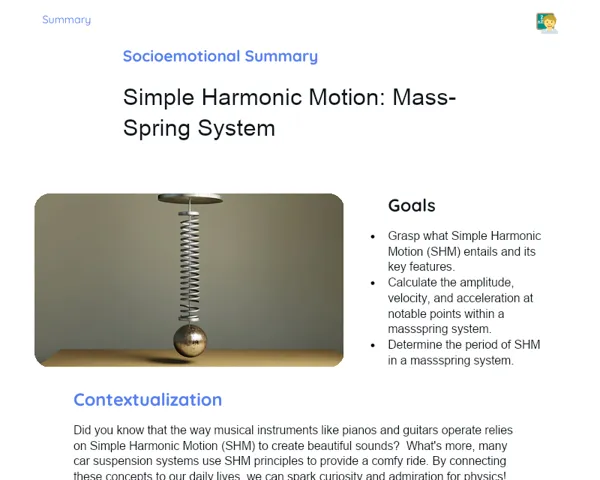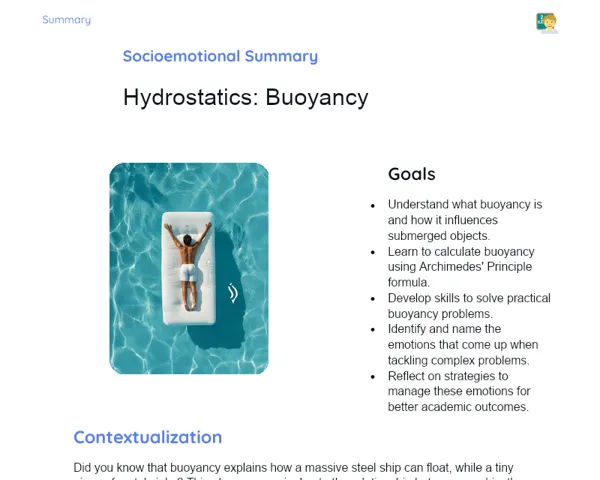Goals
1. Grasp that both liquids and their containers expand, with liquids typically expanding more than the containers.
2. Tackle issues related to the thermal expansion of liquids in various containers.
Contextualization
Picture yourself in the kitchen, heating some milk in a pot. Did you realise that both the milk and the pot will expand when heated? This phenomenon, called thermal expansion, is essential for grasping a range of practical situations. From building bridges and train tracks to crafting thermometers, recognising thermal expansion is critical. It allows us to anticipate and manage material changes caused by temperature fluctuations, helping us to avert accidents and refine industrial processes.
Subject Relevance
To Remember!
Concept of Thermal Expansion
Thermal expansion is when materials expand in volume due to rising temperatures. This happens because the particles in the material gain thermal energy, which increases their movement and the space between them.
-
Linear expansion: Increase in a material's length.
-
Area expansion: Increase in a material's surface area.
-
Volumetric expansion: Increase in a material's volume, especially relevant for liquids.
Expansion of Liquids and Containers
Both liquids and their containers expand when heated. Typically, liquids expand more than solid containers, which can cause overflow or increased pressure inside the container.
-
Coefficient of expansion: Varies between liquids and solids.
-
Importance in industries: It's crucial to account for expansion to prevent accidents.
-
Example of application: Mercury or alcohol thermometers, where the liquid's expansion reflects the temperature.
Coefficient of Volumetric Expansion
The coefficient of volumetric expansion is a constant that measures how much a material's volume increases per temperature change. It varies by material and is key to calculating volume changes due to heat.
-
Formula: ΔV = V0 * β * ΔT, where ΔV is the change in volume, V0 is the initial volume, β is the coefficient of volumetric expansion, and ΔT is the change in temperature.
-
Relevance: Helps predict how materials will expand or contract with temperature changes.
-
Application: Useful in engineering projects to anticipate dimensional changes in structures and containers.
Practical Applications
-
Civil Engineering: Engineers must consider thermal expansion while designing bridges and roads to prevent structural issues.
-
Food Industry: Packaging must be designed to handle the expansion of liquids and containers to avoid spills or ruptures.
-
Thermometers: The functionality of mercury or alcohol thermometers hinges on the volumetric expansion of the liquid, which indicates temperature.
Key Terms
-
Thermal Expansion: The increase in material's size due to temperature rise.
-
Coefficient of Volumetric Expansion: The constant defining a material's volumetric expansion per temperature unit.
-
Linear Expansion: Length increase in a material from heat.
-
Area Expansion: Surface area increase in a material due to heat.
-
Volumetric Expansion: Volume increase in a material due to heat.
Questions for Reflections
-
How do various materials react to thermal expansion, and what does this mean for your future careers?
-
Why is it important to consider thermal expansion when designing containers for liquids in industrial settings?
-
How might thermal expansion impact the safety and effectiveness of engineering and industrial projects?
Practical Challenge: Measuring Volumetric Expansion
Let’s solidify our grasp of thermal expansion by measuring how a liquid’s volume changes when heated in a glass container.
Instructions
-
Gather your materials: a glass beaker, water, a thermometer, a hot plate, a ruler or measuring tape, and a marker.
-
Mark the initial water level in the beaker at room temperature.
-
Gently heat the water on the hot plate, keeping an eye on the temperature with the thermometer.
-
Record the water level in the beaker at regular temperature intervals (for example, every 10°C).
-
Compare the water levels at the different temperatures and calculate the volumetric expansion of the water and the glass.
-
Share your findings with your peers and consider the possible practical implications, like designing containers for liquids under varying thermal conditions.



